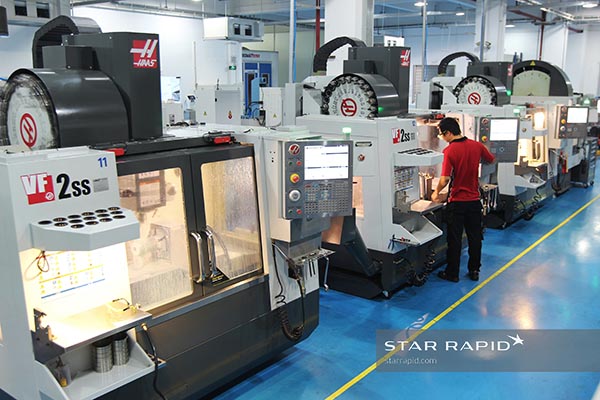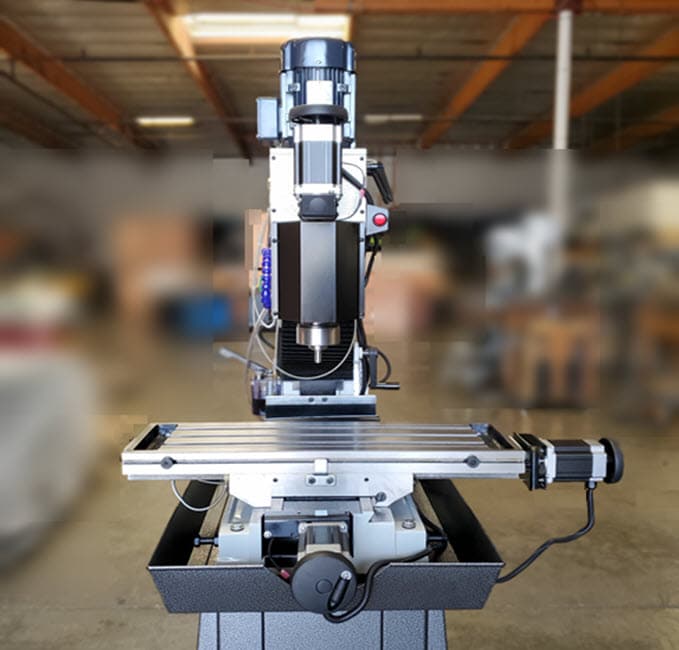Table of Contents
Computer Numerical Control (CNC) milling machines have revolutionized the way we manufacture parts and components. With the ability to precisely cut and shape metal, wood, and plastic, CNC mills are a must-have in any modern manufacturing facility. However, one question that often arises is, “How many axes do I need on a CNC mill?” In this article, we’ll explore the answer to this question and help you understand the importance of choosing the right number of axes for your specific application.
When it comes to CNC milling machines, the number of axes you need depends on the complexity of the parts you want to manufacture. While some parts may only require two or three axes, others may require up to five or six. Understanding the capabilities of each axis and how they work together is crucial in determining the number of axes that will best suit your needs. So, whether you’re a seasoned machinist or just starting out, read on to find out more about how many axes you need on a CNC mill.
How Many Axis Do I Need on a CNC Mill?
The number of axis needed on a CNC mill depends on the complexity of the parts being produced. A 3-axis mill can produce simple parts, while a 4 or 5-axis mill can produce more complex parts. A 5-axis mill can produce highly intricate parts with multiple curves and angles, but is generally more expensive. It’s important to consider the type of parts you’ll be producing before deciding how many axis you need on your CNC mill.
How Many Axis Do I Need on a CNC Mill?
If you’re in the market for a CNC mill, you’re likely wondering how many axis you need. A CNC mill can have anywhere from two to five axis, and each additional axis adds to the machine’s capabilities and complexity. In this article, we’ll explore the different axis options available and help you determine how many you need for your specific application.
2-Axis CNC Milling Machines
A 2-axis CNC milling machine is the simplest type of CNC mill. It has two axis, the X-axis and the Y-axis, and is typically used for simple milling operations that require only basic movement in these two directions.
Benefits of a 2-axis CNC mill include:
– Simplicity: 2-axis mills are the simplest and most affordable type of CNC mill, making them a great choice for beginners or those with basic milling needs.
– Speed: With only two axis, 2-axis mills are typically faster than more complex machines.
– Ease of use: 2-axis mills are easy to program and operate, making them a great choice for hobbyists or those with limited experience.
Vs:
– Limited capabilities: 2-axis mills are limited in the types of milling operations they can perform due to their lack of axis.
– Less precision: With only two axis, 2-axis mills may not be as precise as more complex machines.
– Limited scalability: 2-axis mills may not be able to handle more complex projects as your needs grow.
3-Axis CNC Milling Machines
A 3-axis CNC milling machine adds a Z-axis to the X and Y-axis found on a 2-axis machine. The Z-axis allows for vertical movement, enabling the machine to perform more complex milling operations.
Benefits of a 3-axis CNC mill include:
– Increased capabilities: With a Z-axis, 3-axis mills can perform more complex milling operations, such as drilling, tapping, and contouring.
– Precision: The addition of a Z-axis allows for greater precision in milling operations.
– Flexibility: 3-axis mills can handle a wider range of projects than 2-axis mills, making them a great choice for those with more diverse milling needs.
Vs:
– More complex: With an additional axis, 3-axis mills are more complex than 2-axis mills, which can make them more difficult to program and operate.
– Slower: With an additional axis, 3-axis mills may be slower than 2-axis mills.
– Higher cost: 3-axis mills are typically more expensive than 2-axis mills.
4-Axis CNC Milling Machines
A 4-axis CNC milling machine adds a rotary axis to the X, Y, and Z-axis found on a 3-axis machine. This allows the machine to rotate the material being milled, enabling it to perform more complex milling operations.
Benefits of a 4-axis CNC mill include:
– Increased capabilities: With a rotary axis, 4-axis mills can perform more complex milling operations, such as carving and engraving.
– Flexibility: 4-axis mills can handle a wider range of projects than 3-axis mills, making them a great choice for those with more diverse milling needs.
– Efficiency: The rotary axis allows for more efficient milling, as it eliminates the need to reposition the material being milled.
Vs:
– More complex: With an additional axis, 4-axis mills are more complex than 3-axis mills, which can make them more difficult to program and operate.
– Slower: With an additional axis, 4-axis mills may be slower than 3-axis mills.
– Higher cost: 4-axis mills are typically more expensive than 3-axis mills.
5-Axis CNC Milling Machines
A 5-axis CNC milling machine adds a second rotary axis to the X, Y, and Z-axis found on a 4-axis machine. This allows the machine to tilt the material being milled, enabling it to perform even more complex milling operations.
Benefits of a 5-axis CNC mill include:
– Increased capabilities: With a second rotary axis, 5-axis mills can perform the most complex milling operations, such as sculpting and 3D printing.
– Precision: The addition of a second rotary axis allows for even greater precision in milling operations.
– Efficiency: The second rotary axis allows for more efficient milling, as it eliminates the need to reposition the material being milled.
Vs:
– Most complex: With an additional axis, 5-axis mills are the most complex and expensive type of CNC mill.
– Slowest: With two additional axis, 5-axis mills are typically the slowest type of CNC mill.
– Difficult to program and operate: 5-axis mills require advanced programming and operation skills, making them less accessible to beginners and those with limited experience.
Conclusion
Determining how many axis you need on a CNC mill depends on your specific milling needs. If you’re a beginner or have basic milling needs, a 2-axis mill may be sufficient. For more complex milling needs, a 3-axis, 4-axis, or 5-axis mill may be necessary. Consider the benefits and drawbacks of each type of machine before making a decision.
Frequently Asked Questions
Here are some commonly asked questions about the number of axes needed on a CNC mill:
What are the different axis on a CNC mill?
A CNC mill typically has three to five axes. The X-axis moves the table left and right, the Y-axis moves the table forward and backward, and the Z-axis moves the spindle up and down. Some mills also have an A-axis, which rotates the spindle, and a B-axis, which tilts the spindle.
The number of axes you need will depend on the complexity of the parts you want to produce. Simple parts can often be machined with three axes, while more complex parts may require four or five axes.
What are the advantages of having more axes on a CNC mill?
Having more axes on a CNC mill allows you to produce more complex parts with greater precision. For example, a five-axis mill can produce parts with compound curves and undercuts that would be difficult or impossible to machine with a three-axis mill.
Another advantage of having more axes is that it allows you to machine multiple sides of a part without having to reposition it. This can save time and reduce the risk of errors.
Do I need a five-axis mill for my application?
Not necessarily. While a five-axis mill offers greater flexibility and precision, it also comes with a higher price tag. If your parts can be machined with a three-axis or four-axis mill, it may be more cost-effective to go with one of these options.
However, if you frequently produce complex parts or parts with multiple sides, a five-axis mill may be worth the investment in the long run.
Can I retrofit my three-axis mill to add more axes?
It is possible to retrofit a three-axis mill to add more axes, but it can be a complex and expensive process. It may be more cost-effective to purchase a new mill with the number of axes you need.
If you are considering a retrofit, be sure to work with a qualified CNC technician who can evaluate your machine and determine the feasibility of adding more axes.
What should I consider when choosing the number of axes for my CNC mill?
The number of axes you need will depend on the complexity of the parts you want to produce and your budget. Consider the types of parts you will be machining and whether they require multiple sides or compound curves.
You should also consider your budget and the long-term cost-effectiveness of purchasing a mill with more axes versus retrofitting an existing mill. It may be helpful to consult with a CNC expert to determine the best option for your specific needs.
In conclusion, the number of axis you need on a CNC mill largely depends on the type of work you plan to do. For standard milling operations, a 3-axis CNC mill is often sufficient. However, if you plan to work on more complex parts with intricate shapes and curves, a 4 or 5-axis CNC mill may be required.
It’s important to note that while additional axis can offer more flexibility and precision, they also come with a higher price tag. It’s important to weigh the benefits against the cost before making a purchasing decision.
Ultimately, the number of axis you choose should be based on your specific needs and budget. With the right equipment, you can achieve the precision and accuracy needed to produce high-quality parts and products.
Request a quote today!
[contact-form-7 id="1578" title="Contact form"]
Please compress the file into a ZIP or RAR file before uploading. Alternatively, send through your RFQ by email.
enquires@unitymanufacture.com





